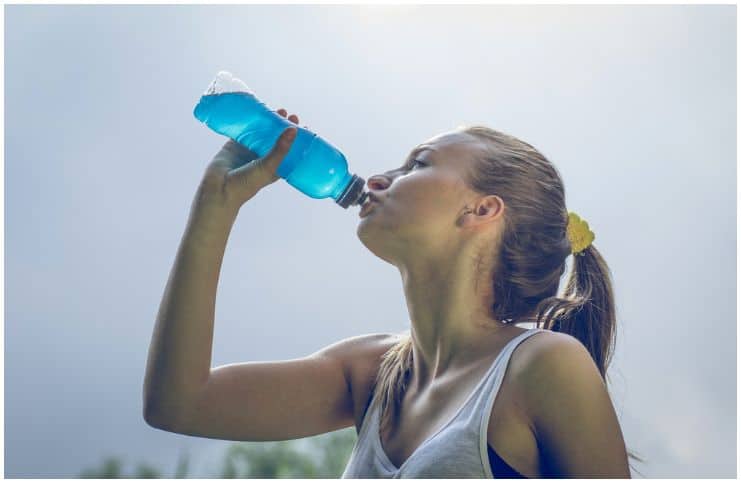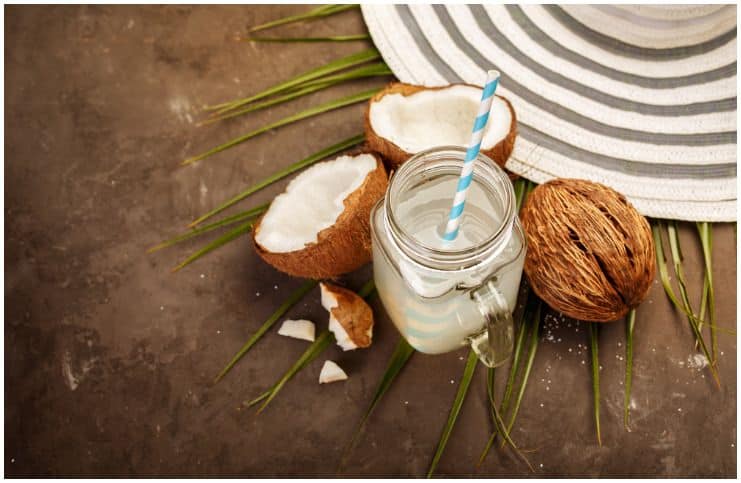Facts About Pedialyte
It was originally designed to help replace electrolytes in dehydrated children, hence, the flavors are actually pretty good.
Dehydration is quite dangerous, particularly for infants, and they should be treated immediately. Also, when younger than 6 months, a child shouldn’t go longer than 6 hours without a wet diaper.
Note – this drink contains electrolytes which need to be replaced, however, they are still not as good for your baby as your breast milk. Therefore, if a nursing baby is dehydrated, the mother should continue nursing.
Furthermore, this drink has gained a reputation as a hangover cure (about 35 percent of its buyers are adults as well as some athletes who use it).
Sodas, juice, and many sports drinks are too low in sodium and potassium, that are vital electrolytes which are lost due to excessive urination and sweat.
Both fructose and glucose contained in this drink can help both adults and children reabsorb water along with depleted electrolytes, therefore, help in rehydration. In addition, this drink meets the current medical guidelines for helping to prevent dehydration.
Moreover, you can give your dog this drink, as it does not contain any substances which have any danger to your dog’s health. It’s actually considered to be a “medical food” by the US Food and Drug Administration.
How much to drink
The amount of this drink you should consume depends on your weight. If children and toddlers experience serious diarrhea, they should usually take around 100 mL per kilogram of body weight per day. Anyway, it is best to consult with your doctor.
Interesting fact – as of 2007, this drink is popular with undocumented immigrants seeking to enter the US close to the US-Mexico border in order to avoid serious dehydration.
Ingredients
Dextrose, Water, Artificial & Natural Flavor, Citric Acid, Salt, Potassium Citrate, Sucralose, Sodium Citrate, Zinc Gluconate, Acesulfame Potassium, and Yellow 6 (a petroleum-derived orange azo dye). Furthermore, an 8-ounce serving of this drink has about 100 calories, which is approximately equivalent to what you would burn swimming for 10 minutes or run one mile.
Facts About Gatorade
It was the original sports drink, produced in a collaboration between a football coach and medical professionals at the University of Florida. It is currently made and owned by PepsiCo and is distributed in more than 80 countries.
Although this sports drink was developed with athletes in mind, it can be useful for people participating in a mild physical exercise.
Ingredients
Brominated Vegetable Oil, Filtered Water, Citric Acid, Sucralose (an artificial sweetener and sugar substitute), Salt, Natural Flavors, Monopotassium Phosphate, Sodium Citrate, Artificial Colors, and Glycerol Ester of Wood Rosin.
Furthermore, a 12 oz. serving of this sports drink has 21 grams of sugar. However, a regular bottle of this drink contains 32 oz., so you are getting about 56 grams of sugar.
Note – the food colorings used in this drink, such as red 40 and blue 1, may be associated with hyperactivity in children, and symptoms of ADHD (Attention Deficit Hyperactivity Disorder – a serious condition which makes it difficult for the children to control impulsive behaviors and pay attention) have been shown to lessen in severity when this type of ingredients are taken out of a child’s diet.
Bottom Line – Pedialyte vs Gatorade
For adults with hangovers (and dehydrated children), Pedialyte is the best alternative, particularly if vomiting and related stomach problems have occurred.
For athletes, Gatorade is better due to the fact that Pedialyte does not contain enough carbohydrates to help feed working muscles.
While both appear to have benefits, they are simply full of too much artificial sugar substitutes or sugar, which over time, will make your body acidic and deplete you of the very electrolytes you are trying to replenish. In addition, consuming sugar with dietary fiber is never a good idea.
More importantly, if people practice physical exercise moderately and have a diet focused on fruits and vegetables, they have nothing to gain by consuming these types of drinks instead of water for rehydration, according to a report published by the Army’s Institute of Environmental Medicine in Natick, Mass.
You should also know that if you are exercising less than one and a half hour, you may not need any type of sports drinks to improve or maintain performance.
Coconut Water
Coconut water is high in electrolytes, low in sugar (plus, it has fiber), which makes it a perfect drink for dehydrated adults or children.
Coconut water is the easiest, natural way to help your dehydrated child. It is also nature’s solution for sick tummies.
For example, on average, a can of coconut water has 500 mg of potassium, about which you’d get from a cup of orange juice or a banana. In addition, it has much less sugar than fruit juices and sodas, and less sugar than most sports drinks.
Therefore, if you’re going to spend money on a specialty drink, it might as well be as close to nature as possible.
But remember that natural coconut water has less sodium (an important hydration electrolyte) and sugar (muscle fuel) than the average sports drink, that is engineered in a laboratory to optimize and improve athlete performance.
Tip
When it comes to losing weight and building muscle, drinking or eating foods that contain high levels of protein after physical exercise will do a better job than drinking a sports drink.
References http://www.lagrange.edu/resources/pdf/citations/2017/ https://pedialyte.com/what-is-pedialyte

